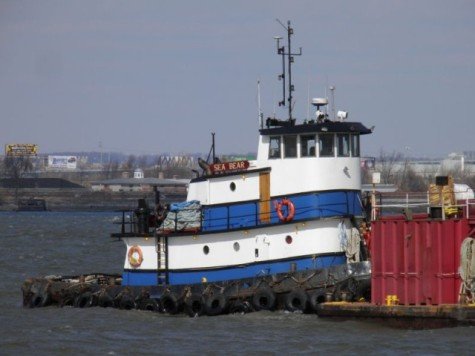By Shoshanna McCollumThe ill-fated vessel that sank off the Fire Island coast last Saturday was there as part of the $207-million federally funded undertaking to renourish our beaches, according to the Army Corps of Engineers.“The tugboat that sank had been working as a subcontractor on the Fire Island Inlet to Moriches Inlet Stabilization Project, supporting repairs to floating equipment,” wrote Kenneth Wells, Public Affairs Officer of the USACE New York District in a statement to Fire Island News. “However, the crew had completed their work associated with the project earlier in the day and were not carrying out work associated with the project when the incident occurred. The Corps of Engineers would also like to offer our sincerest condolences for the loss of the vessel’s captain.”The incident made national headlines with the dramatic Coast Guard search and rescue of three of the tugboat’s crew-members, as well as the fatality of its Captain, Donald Maloney, 60, of Peckville, Pennsylvania. Survivors included Lars Vetland, 43, of Staten Island; Jason Reimer, 38, of Leonardo, New Jersey; and Rainer Bendixen, 22, of Bay Head, New Jersey.Manufactured in 1991, the 62-foot Sea Bear began taking on water at approximately 2 p.m., on March 14, about a mile and a half offshore of Fire Island Pines. The U.S. Coast Guard dispatched a helicopter and three rescue boats as search efforts were hindered by inclement weather and poor visibility conditions. The surviving men were found clinging together in 37-degree water wearing immersion suits. Maloney’s body was recovered at approximately 5 p.m. He had not managed to put on his immersion suit before abandoning ship and became separated from his crew in the frigid ocean currents.Sea Bear was one of a team of three tugboats returning from the project and heading back to her base in Bayonne, New Jersey, where the company Wittich Brothers Marine, Inc. is located. Traveling in the rear of the pack, its companion vessels traveled onwards until receiving the urgent marine information broadcast (UMIB) and turned back to assist in the search. Why the Sea Bear sank still remains under investigation.“Determining the cause depends on the speed in which the vessel can be salvaged,” said Lt. Martin Betts, spokesman for the Coast Guard’s Long Island Sound Sector. “Missions such as these are stressful and taxing for everyone involved.”




























